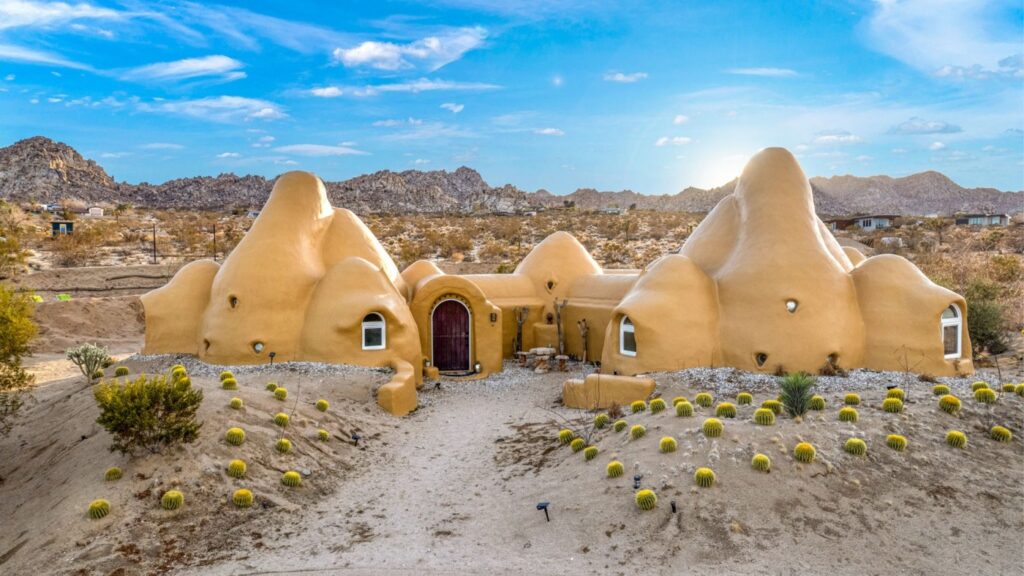
A Joshua Tree retreat comprised of multiple domes is for sale at $2.12 million.
Dubbed “Bonita Domes,” the one-of-a-kind compound is currently a short-term rental that fetches a nightly rate of $780. It spans 1,339-square-foot across a nearly 2-acre lot with a swimming pool and spa, outdoor gazebo kitchen and a temple that Airbnbers “use for meditation purposes,” said James Bianco of Coldwell Banker Realty, the listing agent.
There’s also a step-down circular fire pit.
Records show “Bonita Domes” last traded hands in October 2020 for $808,500.
The builder and former owner created the structure using the SuperAdobe method developed by the nonprofit California Institute of Earth Art and Architecture (CalEarth). They’re made with long sandbags, barbed wire, dirt and essential tools. In a nutshell, sandbags packed with damp earth on-site are coiled and stacked into dome shapes.
CalEarth likens the technique to building a clay pot.
A plaster finish prevents erosion.
Completed in 2014, the sustainable earth-based domes include a 1,000-square-foot main dome home with two bedrooms, a living area, a kitchen with a breakfast nook and two bathrooms.
Another two bedrooms, studio living quarters and a communal bathroom with a soaking tub and partitioned-off shower act as an extension of the main home, but they are housed on the property in separate domes.
Related Articles
Ex-Angels slugger Albert Pujols lists Irvine mansion for $10M
Dana Point oceanfront home with a sunken firepit in the pool asks $55 million
$9.5 million Newport Island home is the tiny enclave’s priciest listing
‘Pimp My Ride’ host Xzibit lists Porter Ranch home for $3.9M
A small but significant historic Palm Springs home seeks $995K
“Bonita Domes” are designed to code and feature traditional plumbing and air conditioning.
SuperAdobe is a modern take on centuries-old adobe construction. The technique was introduced in the 1980s by CalEarth founder Nader Khalili, an Iranian-American architect who died in 2008 at age 72.
The domes are economical, sustainable and sturdy enough to withstand earthquakes like the 7.2-magnitude quake that shook Nepal in 2015, the BBC reported in 2019.
Khalili’s work has been published by NASA and recognized by the United Nations.
